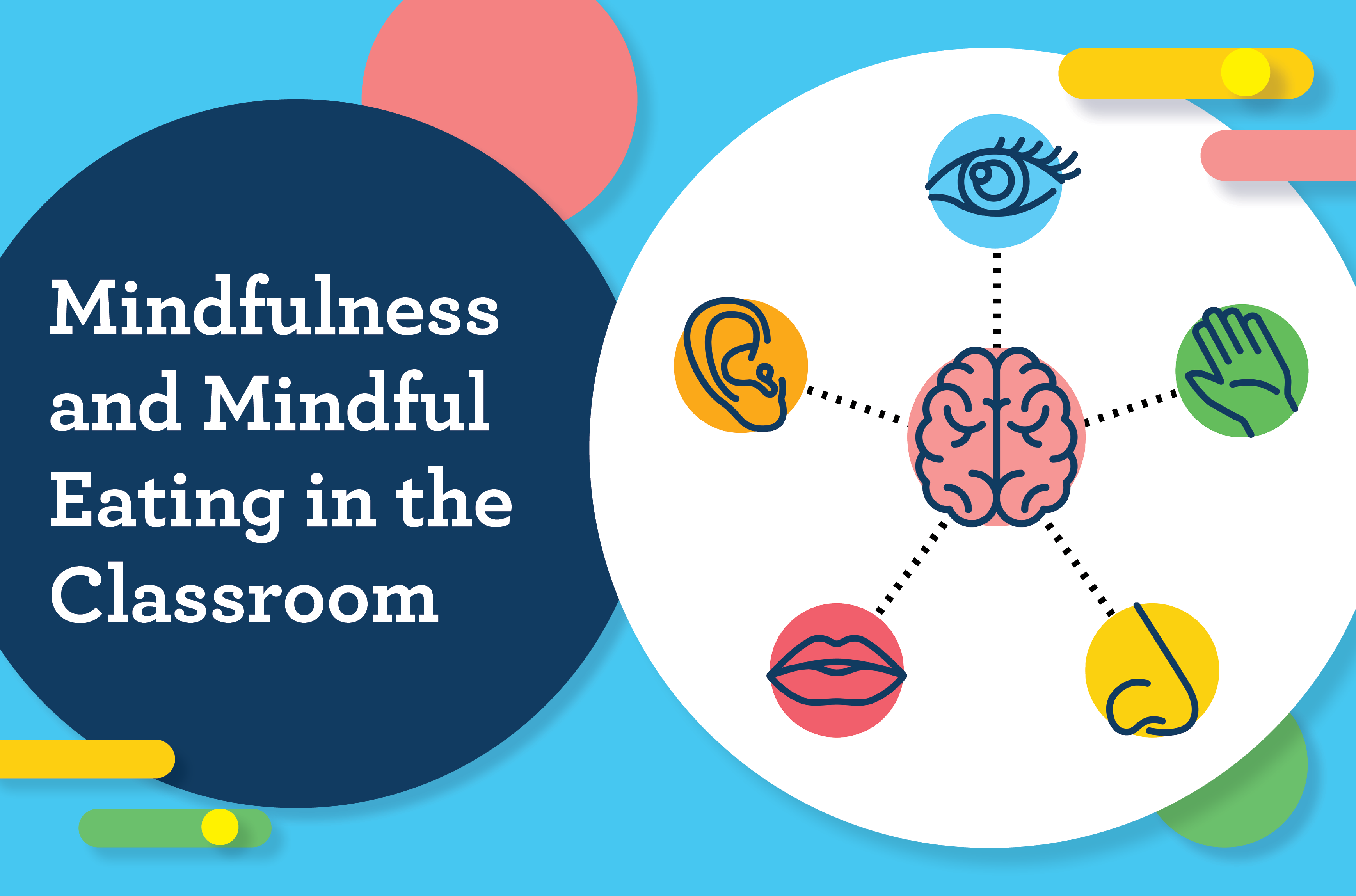Explore tips to get you started on mindfulness and mindful eating with your students.
What is mindfulness and mindful eating?
Mindfulness is “deliberately paying attention, non-judgmentally, in the present moment.”1
So how does that relate to mindful eating? Mindful eating draws on several concepts from mindfulness to be present in our eating experience.
Mindful eating is “using all our senses to be present in the entire eating experience, including choosing and preparing food, while acknowledging our inner wisdom and body cues without judgement.”2
Mindfulness is different from mindful eating, but they are connected. Below are four principles to help you and your students start practising mindfulness. When we apply these principles to eating, we can practise mindful eating at any age.
| Mindfulness Principles | Mindfulness | Mindful Eating |
| 1. Pressing pause and being present. | Focus on the present moment. It’s common to notice your mind wandering off to other thoughts. Invite yourself to “press pause” and re-engage with the present moment.3 |
Focus on the entire eating experience, from food selection and preparation to the meal you are eating.2
In the classroom, this might mean taking a moment to acknowledge the people you are eating with and your surroundings. |
| 2. Curiosity, not judgement | Instead of trying to get mindfulness "right," try to let go of any preconceived expectations in order to be fully present in the situation.3 | Acknowledge your physical and emotional responses to food, without judgement (e.g., a feeling of fullness or a memory associated with a food).2 |
| 3. Sensing, not slowing. | Allow yourself to notice and engage your senses. While for many people slowing down is what allows this to happen, for some it may not be necessary.3 | Try to engage all your senses (sight, smell, taste, touch, hearing) in the entire eating experience.2 |
| 4. Practise, not perfection. | Mindfulness is a lifelong learning process. Your needs and capacity change from day to day, so how you practise mindfulness isn’t always the same. Instead of striving for perfection, continue to be curious in your ongoing learning about mindfulness.3 | Understand that mindful eating is not about achieving a particular outcome. Rather, it is an invitation to engage with food and the eating experience in a way that may or may not be different from usual. |
How is mindfulness and mindful eating related to the curriculum and Canada’s Food Guide?
Mindfulness also ties in directly to Canada’s Food Guide (CFG). One eating habit highlighted in CFG is to “be mindful of your eating habits.” Through the lens of mindful eating, teachers can explore the knowledge, understandings, skills, and procedures (KUSPs) within the organizing idea of healthy eating.
Will all of my students be able to practise mindful eating?
There will be situations in which students may struggle to be present or have trouble engaging all their senses, such as neurodivergence, disability, trauma, lack of access to resources, or other life circumstances. It is important to avoid framing student responses as incorrect or drawing attention to these differences in ways that could encourage comparison among students. Mindful eating is an invitation to approach the eating experience in ways that students perhaps have not before.
How can I use paced learning for teaching mindful eating?
You may be familiar with the term “paced learning,” in which children and youth learn at a pace that matches their developmental stage and interests. So, what does this approach look like in practical terms when you are practicing mindful eating? We’ve suggested some classroom activities below and have linked free resources from TeachNutrition.ca that can support you in practising mindfulness and mindful eating with your students.
| Classroom Activities | Supporting Resources from Teach Nutrition | |
| Early Elementary (K–3) | Use the senses to describe, sort, and identify different foods. | |
| Late Elementary (4–6) | Define how the senses and internal body cues (e.g., hunger, fullness) contribute to experiences with food. | |
| Junior High (7–9) | Compare different eating environments and explore how mindful eating can affect experiences with food. | |
| Senior High (10–12) | Plan a mindful meal or snack. Compare and contrast popular descriptions of mindful eating with its original definition and intentions. |
References
- The Center for Mindful Eating. [n.d.] The principles of mindful eating. www.thecenterformindfuleating.org. Accessed Mar. 29, 2021.
- The Center for Mindful Eating. [n.d.] Introduction to mindful eating. www.thecenterformindfuleating.org. Accessed May 6, 2021.
- Tsui V. The mindful eating workbook: simple mindfulness practices to nurture a healthy relationship with food. Emeryville, CA: Althea Press. 2018.



